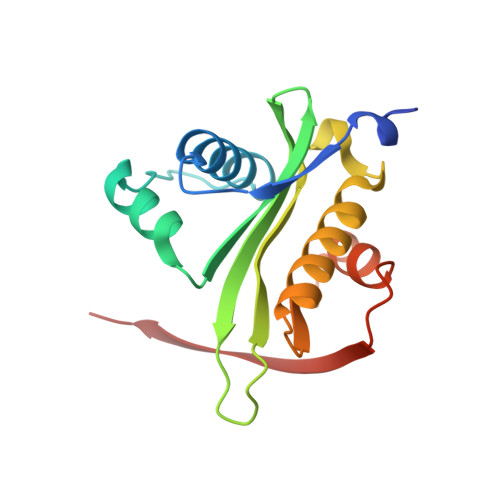Structural and Functional Survey of Environmental Aminoglycoside Acetyltransferases Reveals Functionality of Resistance Enzymes.
Xu, Z., Stogios, P.J., Quaile, A.T., Forsberg, K.J., Patel, S., Skarina, T., Houliston, S., Arrowsmith, C., Dantas, G., Savchenko, A.(2017) ACS Infect Dis 3: 653-665
- PubMed: 28756664
- DOI: https://doi.org/10.1021/acsinfecdis.7b00068
- Primary Citation of Related Structures:
5F46, 5F47, 5F48, 5F49, 5U08 - PubMed Abstract:
Aminoglycoside N-acetyltransferases (AACs) confer resistance against the clinical use of aminoglycoside antibiotics. The origin of AACs can be traced to environmental microbial species representing a vast reservoir for new and emerging resistance enzymes, which are currently undercharacterized. Here, we performed detailed structural characterization and functional analyses of four metagenomic AAC (meta-AACs) enzymes recently identified in a survey of agricultural and grassland soil microbiomes ( Forsberg et al. Nature 2014 , 509 , 612 ). These enzymes are new members of the Gcn5-Related-N-Acetyltransferase superfamily and confer resistance to the aminoglycosides gentamicin C, sisomicin, and tobramycin. Moreover, the meta-AAC0020 enzyme demonstrated activity comparable with an AAC(3)-I enzyme that serves as a model AAC enzyme identified in a clinical bacterial isolate. The crystal structure of meta-AAC0020 in complex with sisomicin confirmed an unexpected AAC(6') regiospecificity of this enzyme and revealed a drug binding mechanism distinct from previously characterized AAC(6') enzymes. Together, our data highlights the presence of highly active antibiotic-modifying enzymes in the environmental microbiome and reveals unexpected diversity in substrate specificity. These observations of additional AAC enzymes must be considered in the search for novel aminoglycosides less prone to resistance.
Organizational Affiliation:
Department of Chemical Engineering and Applied Chemistry, University of Toronto , 200 College Street, Room 333, Toronto, Ontario M5S 3E5, Canada.


















